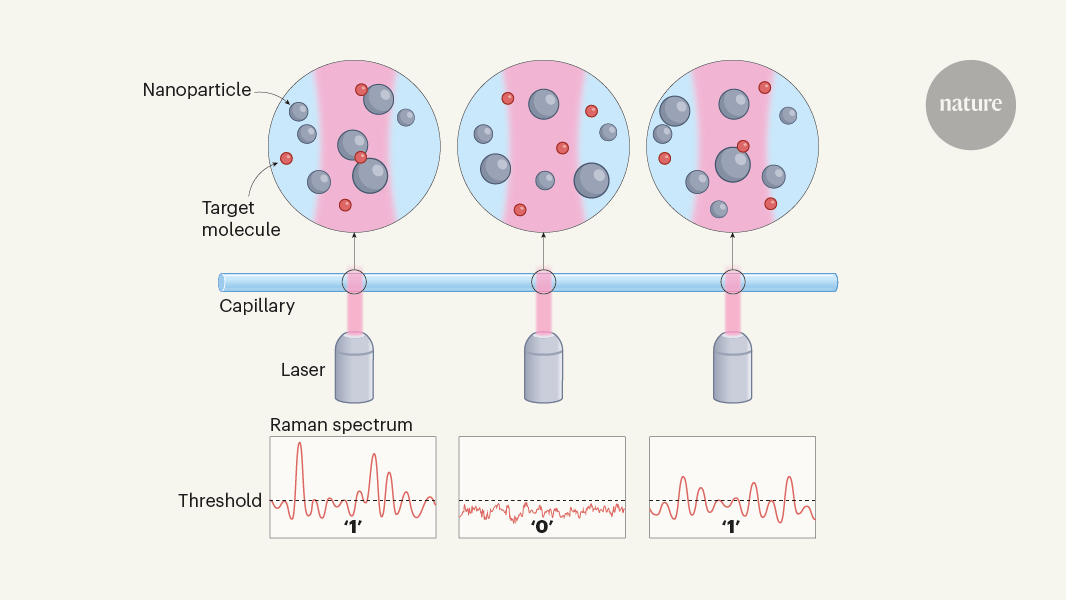approfondimento - Analytical Chemistry - # Digitized Surface-Enhanced Raman Spectroscopy for Trace Substance Detection
Digitized Surface-Enhanced Raman Spectroscopy Enables Sensitive Detection of Trace Substances in Complex Aqueous Environments
Concetti Chiave
Digitized surface-enhanced Raman spectroscopy (SERS) provides a sensitive and reliable method for detecting trace quantities of substances in complex aqueous media.
Sintesi
The content discusses the challenges of detecting trace quantities of substances in complex aqueous environments, such as river water, sewage, and treated drinking water. Conventional methods often rely on complicated sample processing and signal acquisition steps, making them time-consuming and costly.
The article introduces an approach called surface-enhanced Raman spectroscopy (SERS) as a promising alternative. SERS can detect single molecules and has the potential to be more sensitive than other methods. However, SERS is a notoriously finicky technique, with intrinsic variabilities that make it difficult to use for quantifying low concentrations of dissolved compounds.
The authors, Bi et al., report a digitized SERS method that addresses this fundamental issue. The digitized SERS approach provides a sensitive and reliable way to detect trace quantities of substances in complex aqueous environments. The key innovation is the use of a digitized approach that overcomes the inherent variabilities of traditional SERS, enabling accurate quantification of low concentrations of dissolved compounds.
Nanoparticle fix opens up tricky technique to forensic applications
Statistiche
Detecting trace quantities of substances in complex aqueous media, such as river water, sewage and treated drinking water, can be like looking for the proverbial needle in a haystack.
SERS can detect single molecules and has long been promoted as a promising alternative to conventional methods.
SERS is a notoriously finicky technique, with intrinsic variabilities, which makes it hard to use to quantify low concentrations of dissolved compounds.
Citazioni
"An approach known as surface-enhanced Raman spectroscopy (SERS) can detect single molecules2,3 and has long been promoted as a promising alternative to such methods."
"But SERS is a notoriously finicky technique, with intrinsic variabilities, which makes it hard to use to quantify low concentrations of dissolved compounds."
Approfondimenti chiave tratti da
by Peter J. Vik... alle www.nature.com 04-17-2024
https://www.nature.com/articles/d41586-024-01015-6
Domande più approfondite
How can the digitized SERS approach be further improved or adapted to detect an even wider range of trace substances in complex aqueous environments?
The digitized SERS approach can be enhanced by exploring the use of different types of nanoparticles with varying surface properties to increase the range of detectable substances. Additionally, optimizing the design of the digitized SERS platform to improve the efficiency of signal enhancement and reduce background noise would be beneficial. Integration of advanced data processing algorithms and machine learning techniques can also aid in the identification of a wider range of trace substances in complex aqueous environments.
What are the potential limitations or drawbacks of the digitized SERS method compared to other emerging analytical techniques for trace substance detection?
One potential limitation of the digitized SERS method is the requirement for precise control over experimental conditions to ensure reproducibility, which can be challenging in real-world applications. The sensitivity of SERS to environmental factors such as pH, temperature, and ionic strength can also pose limitations. Furthermore, the cost of implementing SERS technology and the expertise needed to operate and interpret the results may be higher compared to other emerging analytical techniques for trace substance detection.
How might the insights from this work on digitized SERS be applied to improve the sensitivity and reliability of other spectroscopic techniques used in environmental monitoring or forensic analysis?
The insights gained from the digitized SERS method can be applied to enhance the sensitivity and reliability of other spectroscopic techniques by developing standardized protocols for sample preparation and data analysis. By understanding the factors that influence the variability of spectroscopic measurements, researchers can optimize experimental conditions to improve the accuracy and reproducibility of results. Additionally, the integration of digitized approaches and automation in data acquisition and processing can streamline the workflow of spectroscopic techniques, making them more efficient and reliable for environmental monitoring and forensic analysis.
0
